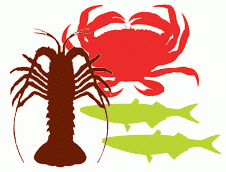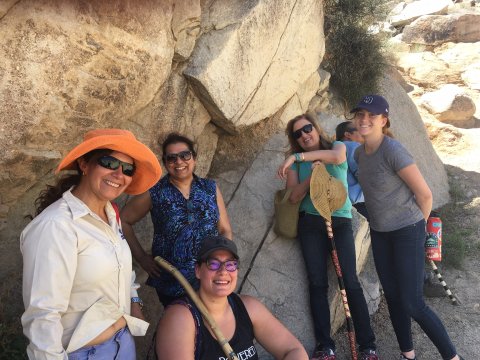
Tribal Affairs
OEHHA is the lead entity within the California Environmental Protection Agency (CalEPA) for assessing health risks posed by environmental chemicals.
OEHHA works on fish consumption advisories, harmful algal blooms, CalEnviroScreen, and climate change indicators, as well as other projects. Please see below for more information.
OEHHA Tribal Liaison
Paula Torrado Plazas, Tribal Liaison (lead)
Email: paula.torradoplazas@oehha.ca.gov
Phone: (916) 764-2831
Laura August, Co-Tribal Liaison
Email: laura.august@oehha.ca.gov
Phone: (916) 327-7324
OEHHA Tribal Consultation Policy
OEHHA has developed a policy on consultation with California Native American Tribes.
For more information, visit OEHHA's Tribal Policy page.
OEHHA Activities of Potential Interest to Tribes
The programs described below are examples of OEHHA activities that may be of interest to California Tribes.
Fish Consumption Advisories
OEHHA’s fish advisories provide “safe eating guidelines” to help people choose the safest fish to eat and avoid fish species with high levels of chemicals in them. The advisories are based on sampling results for common fish species that people catch and eat from California water bodies.
Harmful Algal Blooms (HABs)
An algal bloom is a rapid growth of algae and/or cyanobacteria in water. OEHHA performs risk assessment and hazard evaluation activities relating to HABs in lakes, rivers, and ocean environments. In consultation with the Department of Public Health, OEHHA recommends actions such as closures, delay of openings, and re-openings of fisheries, based on high levels of toxic substances, including marine biotoxins such as domoic acid.
CalEnviroScreen
CalEnviroScreen is a mapping tool that helps identify California communities that are most affected by many sources of pollution, and where people are often especially vulnerable to pollution’s effects. Disadvantaged communities, identified using CalEnviroScreen, are targeted for investment of proceeds from the State’s cap-and-trade program.
Indicators of Climate Change in California
In November 2022, OEHHA released the forth edition of the report: Indicators of Climate Change in California. OEHHA researches and presents indicators describing how California’s climate is changing and how these changes are affecting the state. This 2022 report presents indicators of climate change describing how California’s climate is changing and how these changes are affecting the state and Tribal Nations.












